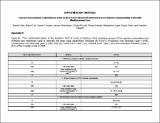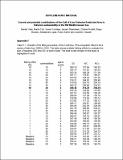Por favor, use este identificador para citar o enlazar a este item:
http://hdl.handle.net/10261/239164COMPARTIR / EXPORTAR:
 SHARE SHARE
 CORE
BASE CORE
BASE
|
|
| Visualizar otros formatos: MARC | Dublin Core | RDF | ORE | MODS | METS | DIDL | DATACITE | |

| Título: | Current and potential contributions of the Gulf of Lion Fisheries Restricted Area to fisheries sustainability in the NW Mediterranean Sea |
Autor: | Vilás González, Daniel CSIC ORCID; Coll, Marta CSIC ORCID ; Corrales, Xavier; Steenbeek, Jeroen CSIC ORCID; Piroddi, Chiara CSIC ORCID; Macías, Diego CSIC ORCID; Ligas, Alessandro; Sartor, Paolo; Claudet, Joachim | Palabras clave: | Fisheries rebuilding Future management scenarios Ecopath with Ecosim Gulf of lion Food webs Ecological indicators |
Fecha de publicación: | ene-2021 | Editor: | Elsevier | Citación: | Marine Policy 123: 104296 (2021) | Resumen: | Among FAO's Major Fishing Areas, the Mediterranean and the Black Sea had the highest percentage (62.5%) of stocks fished at unsustainable levels, especially demersal stocks. Spatial-temporal restrictions of fishing activities are important measures used for the management of marine stocks. However, sometimes these regulations are not fully implemented due to a lack of effectiveness and compliance, which contributes to their failure. Here, we developed a food-web model approach using the Ecopath with Ecosim (EwE) model representing the Fisheries Restricted Area (FRA) of the Gulf of Lion ecosystem (CoSEGoL model) prior to the establishment of the fisheries restrictions (2006–2008). We characterized the structure and functioning of the ecosystem before and after its establishment. The constructed food-web model was then fitted to the available time series of data from 2008 to 2016 to verify whether this FRA has contributed to the recovery of target demersal species and the demersal community. The fitted model was used to explore alternative future management scenarios to explore feasible management options in order to ensure a full ecosystem recovery under climate change conditions. Our results suggest a failure in the recovery of target species in the restricted area under the current management scenario, potentially revealing a lack of protection efficiency and/or enforcement. Scenarios of management options under plausible climate futures revealed possible recovery of targeted species, especially European hake. The study highlighted the importance of considering trophic interactions between predators and prey to identify trade-offs and synergies in fisheries management outcomes and the need to consider both fishing and climate dynamics | Descripción: | 14 pages, 12 figures, 1 table, supplementary material https://doi.org/10.1016/j.marpol.2020.104296 | Versión del editor: | https://doi.org/10.1016/j.marpol.2020.104296 | URI: | http://hdl.handle.net/10261/239164 | DOI: | 10.1016/j.marpol.2020.104296 | Identificadores: | issn: 0308-597X |
| Aparece en las colecciones: | (ICM) Artículos |
Ficheros en este ítem:
| Fichero | Descripción | Tamaño | Formato | |
|---|---|---|---|---|
| Vilas_et_al_2021_preprint.pdf | 1,26 MB | Adobe PDF |  Visualizar/Abrir | |
| Vilas_et_al_2021_suppl_1.pdf | 489,37 kB | Adobe PDF |  Visualizar/Abrir | |
| Vilas_et_al_2021_suppl_2.pdf | 680,44 kB | Adobe PDF |  Visualizar/Abrir | |
| Vilas_et_al_2021_suppl_3.xlsx | 38,01 kB | Microsoft Excel XML | Visualizar/Abrir | |
| Vilas_et_al_2021_suppl_4.pdf | 341,09 kB | Adobe PDF |  Visualizar/Abrir | |
| Vilas_et_al_2021_suppl_5.pdf | 583,73 kB | Adobe PDF |  Visualizar/Abrir | |
| Vilas_et_al_2021_suppl_6.pdf | 190,76 kB | Adobe PDF |  Visualizar/Abrir |
CORE Recommender
SCOPUSTM
Citations
7
checked on 22-abr-2024
WEB OF SCIENCETM
Citations
4
checked on 25-feb-2024
Page view(s)
194
checked on 23-abr-2024
Download(s)
485
checked on 23-abr-2024
Google ScholarTM
Check
Altmetric
Altmetric
NOTA: Los ítems de Digital.CSIC están protegidos por copyright, con todos los derechos reservados, a menos que se indique lo contrario.
